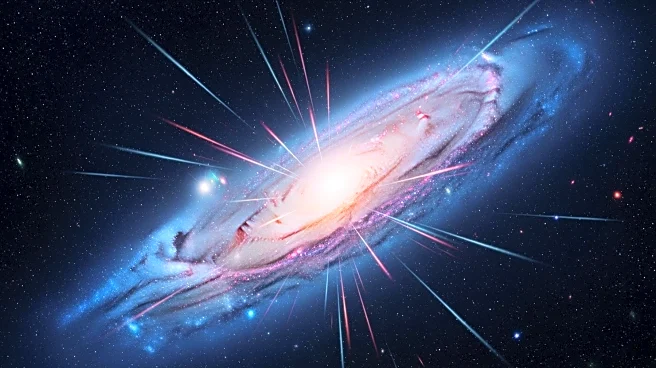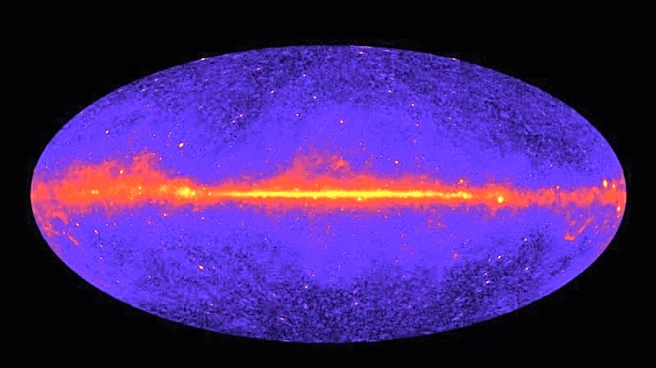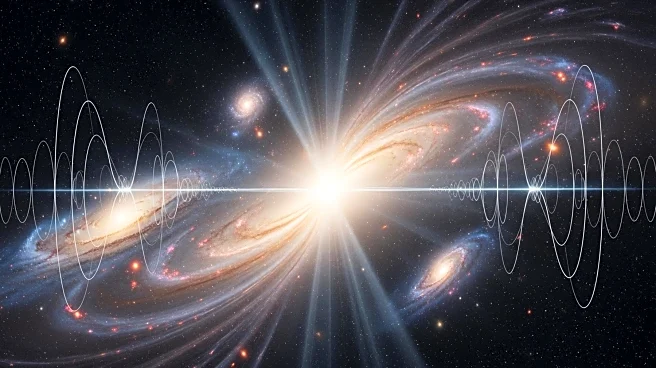What's Happening?
A new study has explored the excess gamma rays detected near the center of the Milky Way, potentially linked to dark matter. The Fermi Gamma-ray Space Telescope has mapped these gamma rays, sparking interest
in their origin. Two hypotheses are considered: one involves dark matter particle collisions, while the other attributes the gamma rays to millisecond pulsars. Advanced simulations have shown that both explanations are plausible, with dark matter potentially being indirectly detected through its gravitational effects. The study emphasizes the importance of understanding dark matter, which constitutes a significant portion of the universe.
Why It's Important?
The confirmation of dark matter's existence would be a major breakthrough in physics, offering insights into the universe's composition and the forces shaping cosmic structures. This research could redefine our understanding of matter and energy, influencing scientific theories and technological developments. The implications extend to various fields, including cosmology and particle physics, as researchers seek to unravel the mysteries of dark matter and its interactions with visible matter.
What's Next?
The Cherenkov Observatory, currently under construction in Chile, is expected to become operational by 2026. This powerful gamma-ray telescope could distinguish between emissions from dark matter and pulsars, providing clarity on the gamma-ray excess. The scientific community is optimistic that this facility will offer definitive evidence, advancing our understanding of dark matter and its role in the universe.
Beyond the Headlines
The study highlights the challenges in detecting dark matter, which does not emit or block light. The indirect detection through gamma rays offers a promising avenue, but direct evidence remains elusive. The implications of confirming dark matter extend beyond scientific discovery, potentially influencing philosophical and ethical considerations about the universe's nature and our place within it.












